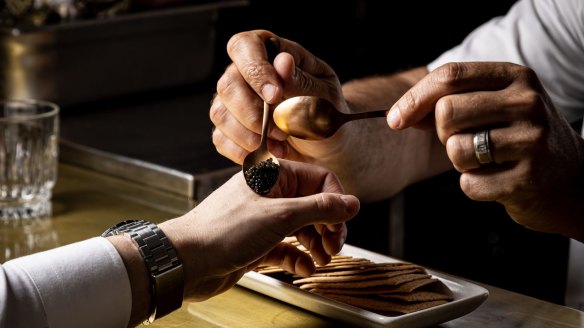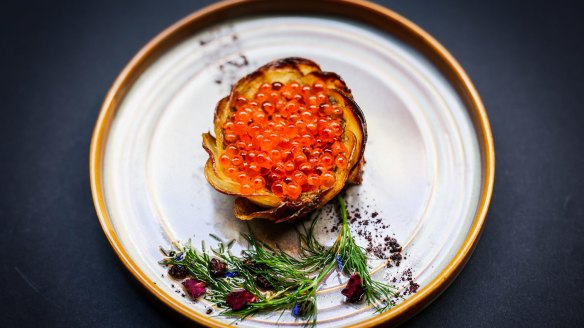Everything you need to know about ... caviar

Delicious, nutritious and contentious, these tiny salted fish eggs were once food for the poor but are now an expensive luxury item. The umami-rich roe are increasingly being used by chefs as both an ingredient and a decadent canape.
What is it?
The word caviar comes to us from the Persian word khav-ya, reflecting the ancient and widespread history of preserving fish roe, mostly different species of sturgeon. These prehistoric fish are indigenous to the rivers and coastal waterways of the northern hemisphere.

Wild sturgeon were once slaughtered to harvest the eggs but this unsustainable method, along with environmental degradation of seas and rivers, has seen 27 species listed as critically endangered.
Most caviar now comes from farms in China, Italy and Poland, where eggs are extracted through a small incision and the fish then released. The tiny eggs are carefully salted, then rinsed, the salt penetrating the fine skin and preserving them.
The term "caviar" is also used to describe salted fish eggs from other species, including lumpfish, trout and salmon.
While caviar has traditionally been eaten using a mother of pearl spoon to avoid any metallic taste affecting the flavour, the modern trend is to eat a morsel of caviar from the fleshy part of the hand, between the bottom of the thumb and index finger.
Warming it with your body heat for a few seconds brings out the full flavour.
Why do we love it?
"I love to savour those little eggs between my tongue and roof of my mouth and take in that subtle saltiness and feel the soft texture," says Nick Deligiannis, head chef at Audrey's at Hotel Sorrento, on Victoria's Mornington Peninsula.
"Then, especially with beluga and oscietra caviar, there's the release of those aromas of warm fruit, nuts and that butteryness."
Deligiannis uses the saltiness of Polanco Baerii caviar and Yarra Valley salmon caviar to season a beurre blanc sauce, which he serves with blue-eye cod.
At Nomad in Surry Hills, Sydney chef Jacqui Challinor uses the salty pop of Yarra Valley salmon caviar to punctuate the silky richness of rillettes made from kingfish collar.
And at Nomad's Melbourne restaurant, head chef Brendan Katich uses Yarra Valley smoked salmon caviar in a dish with creme fraiche and puffed trout skin.
"We love the ethical standards of the product. The smoke gives punchy flavour and the eggs have that crisp pop."
How do you use it?
Serve it up straight from the jar or spread on a blini. Pimp your devilled eggs with a sprinkle of caviar or dab a little on freshly shucked oysters.
Blend lemon juice, extra virgin olive oil, chopped dill and a few tablespoons of caviar with finely diced raw ocean trout to make a luxurious tartare.
Spoil yourself with a caviar carbonara by mixing egg yolks through drained hot tagliatelle, grated parmesan, freshly cracked black pepper and caviar.
Where do you get it?
Buy caviar from specialty food stores and online.
Send your culinary conundrums and ingredient suggestions to brainfood@richardcornish.com.au or Twitter and Insta @foodcornish.
Appears in these collections
- More:
- Food
- Brain food
